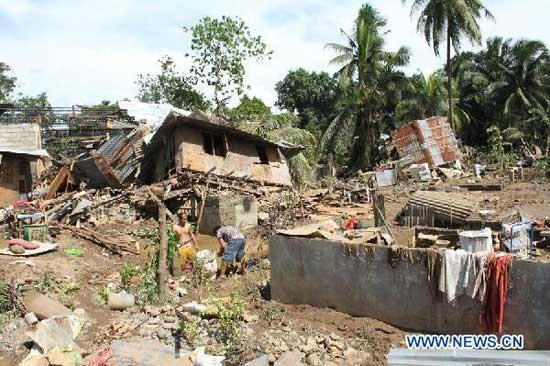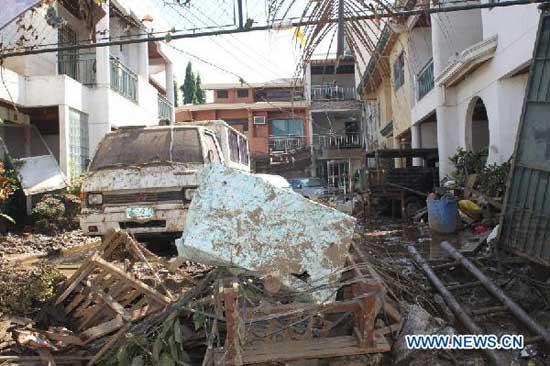Philippines storm toll rises to 652
Tropical Storm Washi has finally moved on from the Philippines, after causing devastating flash floods across a wide swath of the country's south. According to the Philippine Red Cross, at least 652 people have now died in the floods, mostly children and women. Another 800 remain missing.
 |
|
Two men search for useful things after the tropical storm Washi hit the place in Cagayan de Oro, Mindanao Island in southern Philippines, Dec. 18, 2011. |
In Cagayan de Oro, at least 239 people are known to have died.
Whole villages nearby have been washed away, leaving thousands displaced.
Most victims had been asleep on Friday night when raging floodwaters cascaded from the mountains carrying debris and uprooted trees .
Survivors have been continuing their desperate search for missing loved ones throughout Sunday. The army says the city's morgues are piled high with unidentified bodies.
|
According to the Philippine Red Cross, at least 652 people have now died in the floods, mostly children and women. |
With so many affected, government officials flew to Cagayan de Oro on Sunday, to oversee search-and-rescue efforts.
Soldiers have joined police, reservists, coast guard officers and civilian volunteers to mount rescue efforts. But they're being hampered by flooded-out roads and a lack of electricity.
It's feared the death toll will continue to rise. Many villages remain isolated, and the disaster-response teams are being overwhelmed by the scale of the problem.
International reaction has been growing. US Secretary of State Hillary Clinton says the United States, a major ally of the Philippines, is ready to do what it can to help. And China says it will donate money to help with the relief efforts.


